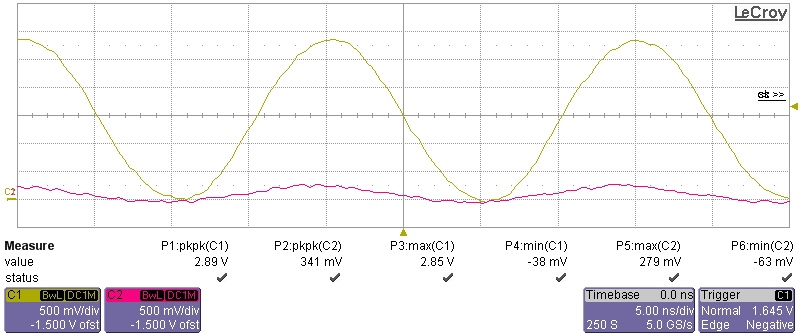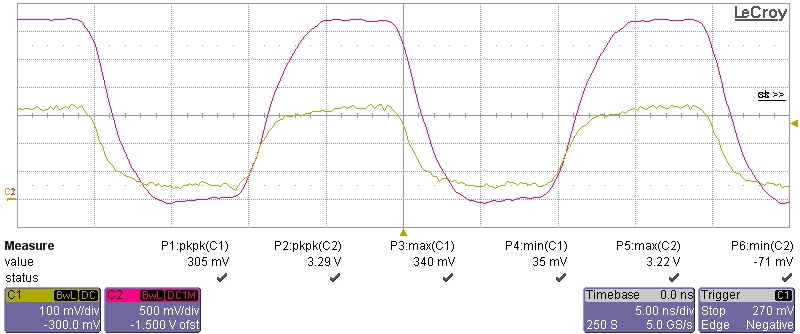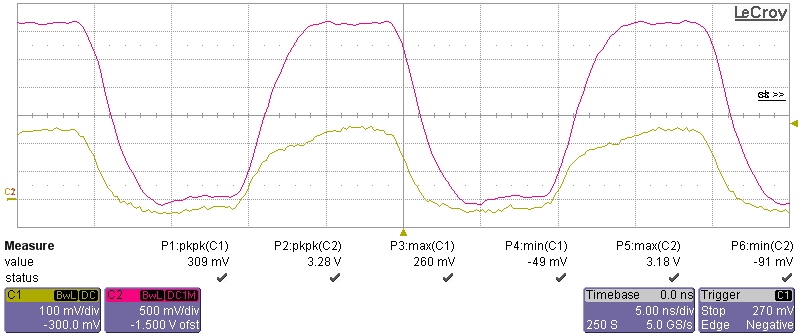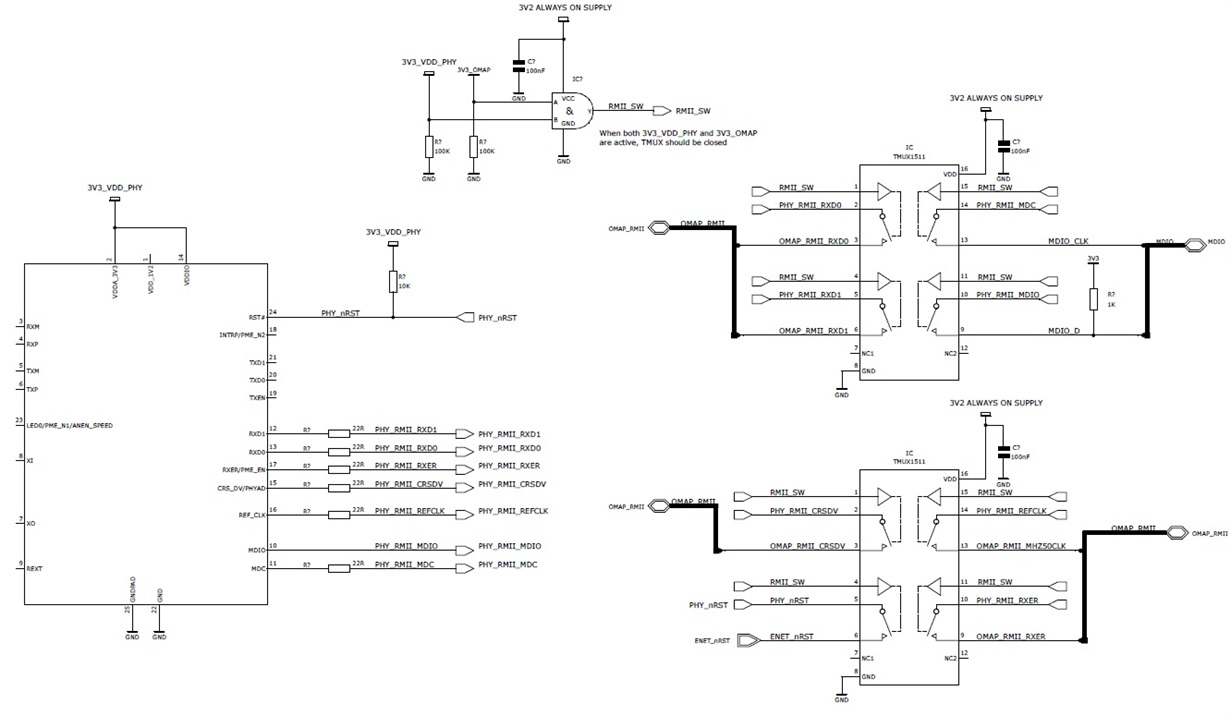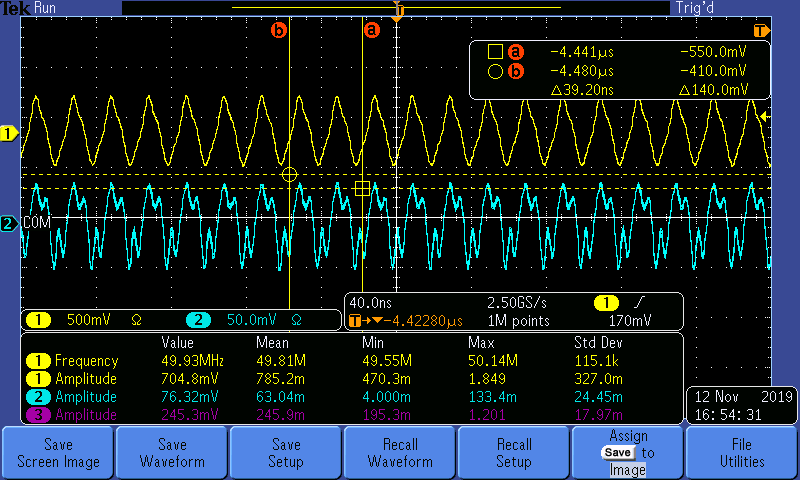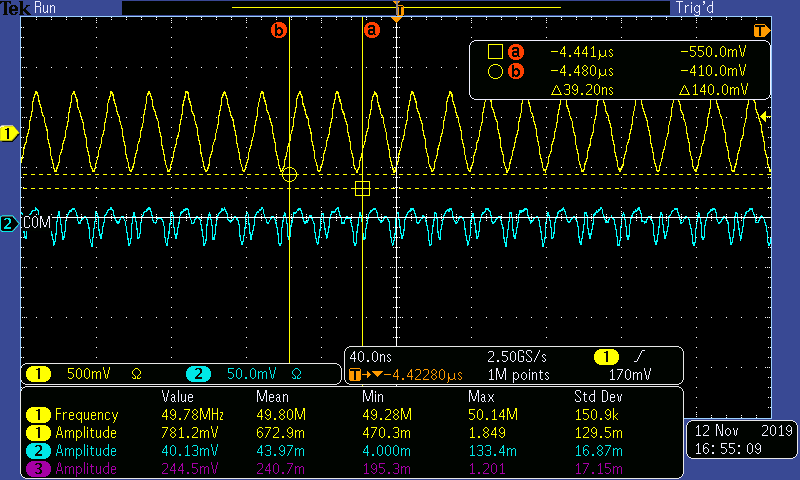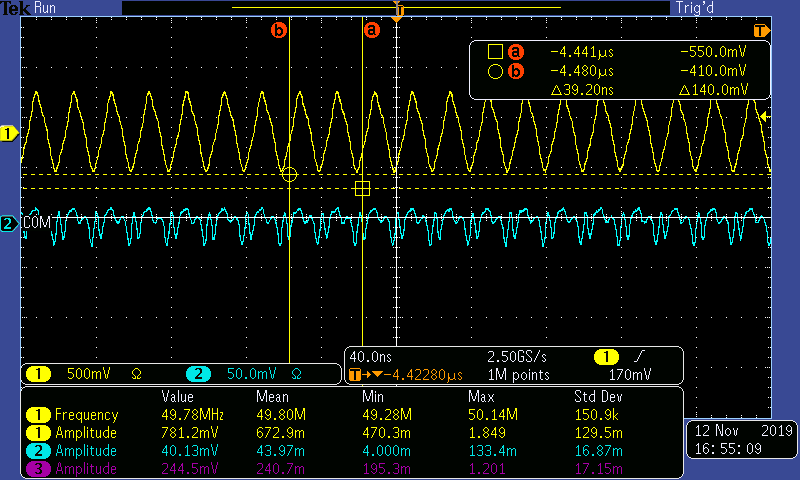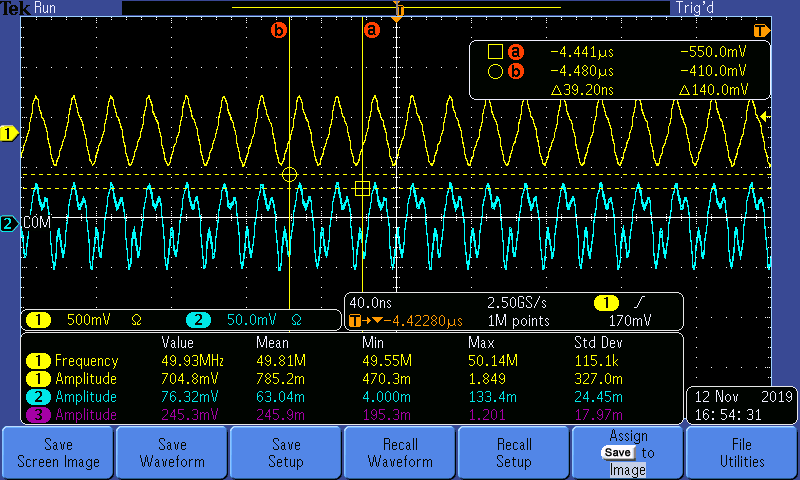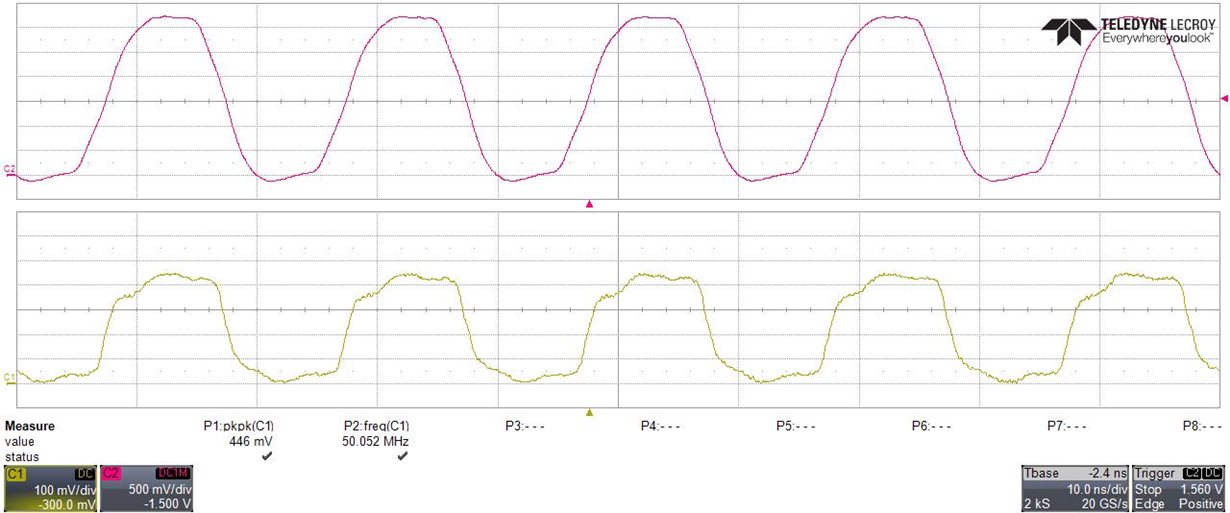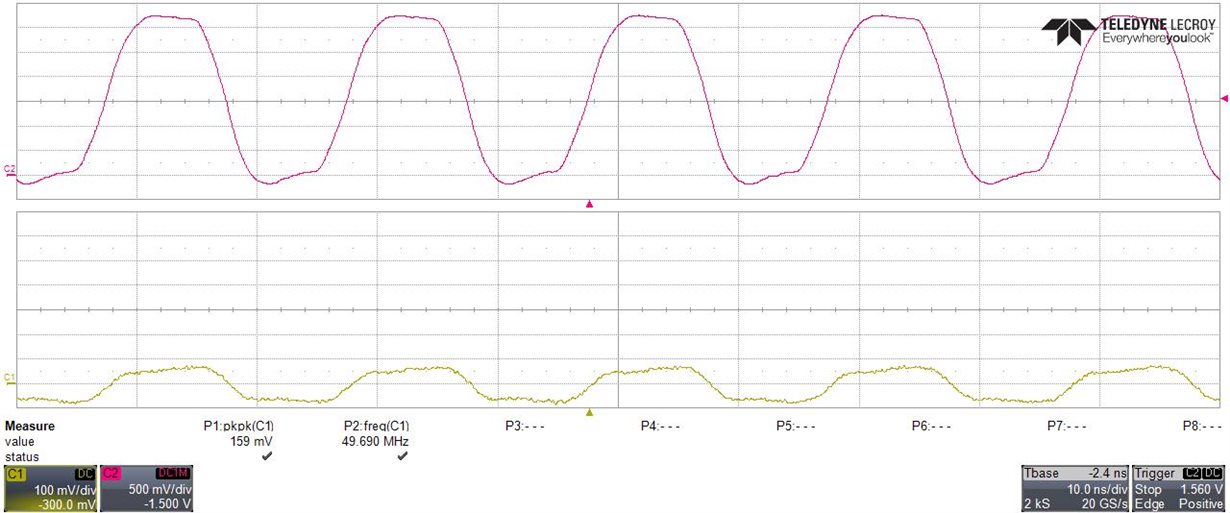Hi,
We are looking to use the TMUX1511 to isolate RMII signals between an Ethernet PHY and OMAP processor when the OMAP is not powered. In this state we are awaiting a WoL magic packet.
As the 50MHz clock is active (along with other signals) during this state, we require a means to isolate it so as not power the OMAP via the 3.3V domain.
I have tested the TMUX1511PWR on the bench, and when the switch is disabled by grounding the SEL pin, and with a 50MHz clock fed into either the S or D pins, there is a 50MHz clock at ~450mV pk-pk on the other pin.
We are using 3.3V to power the TMUX1511 and the 50MHz clock is DC 3.3V fed from a function generator (Tr = 3.0ns)
From the datatsheet the off isolation @ 50MHz should be -30dB, but we are not seeing anywhere near that level
Can you advise as to the issue?
Thanks
Ian


